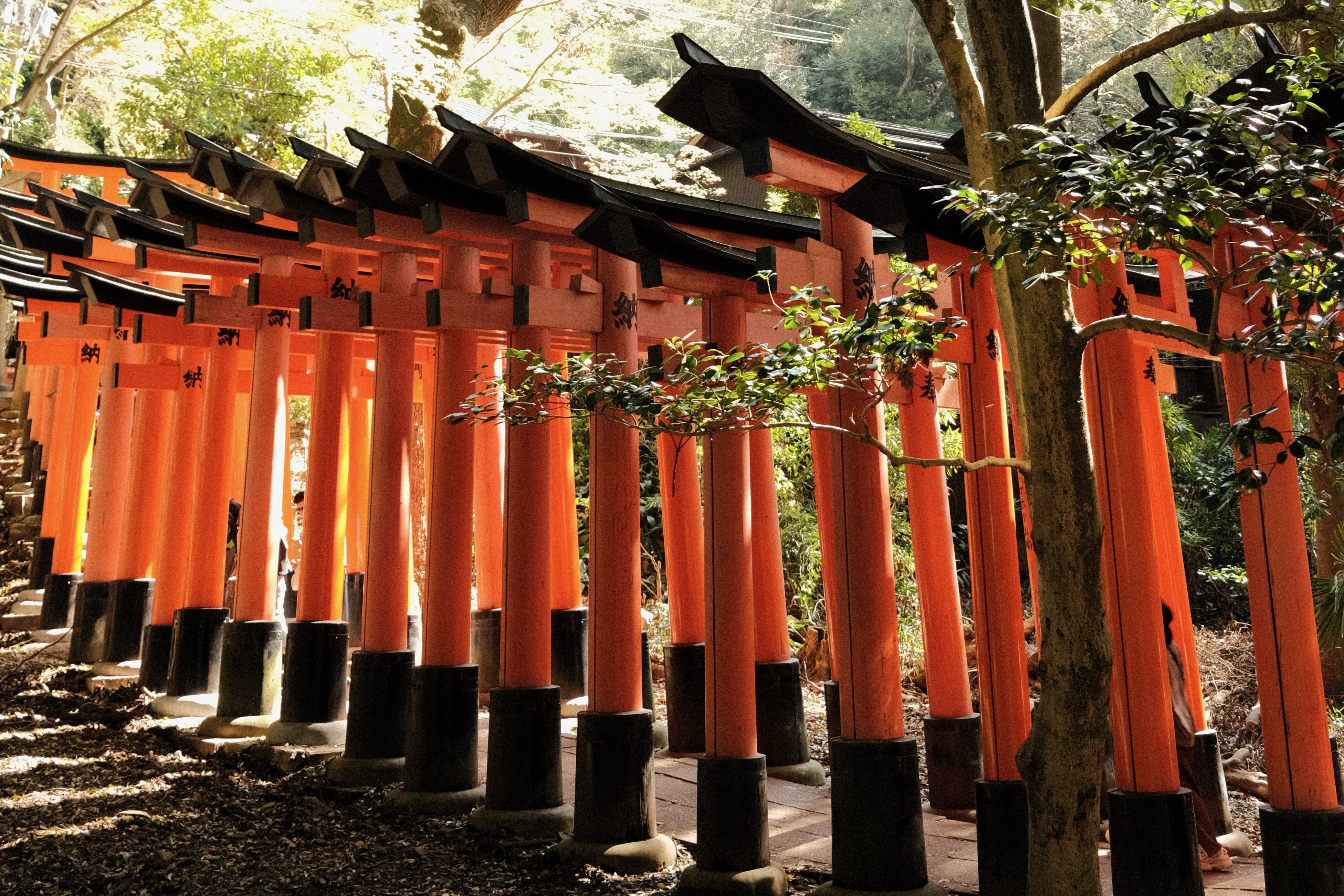
Curator’s statement
Kyoto is more than just a destination — it’s a feeling. A city where time slows, where centuries-old traditions intertwine with the present and where every street, garden and tea house tells a story. This guide isn’t about rushing through tourist checklists — it’s about experiencing Kyoto the way it’s meant to be: thoughtfully, intentionally and with deep cultural appreciation. From hidden temple retreats to intimate tea ceremonies, from the soft rustle of a silk kimono to the artistry behind a perfectly crafted bowl of matcha, this journey is designed for those who seek more than just sights — they seek connection. This is Kyoto for the slow traveler, the culture-lover, the wanderer who values authenticity over itinerary.
The Fora Difference
Book with Gabbie to access exclusive perks and experiences on your trip.
Killer perks
Free upgrades, spa credits and more—we got you
Personalized recs
Customized travel planning for your style
Insider knowledge
Expert advice from people who’ve actually been there
Where to stay in Kyoto
Unlock perks by contacting Gabbie to book your trip.
Things to do in Kyoto

Early morning visit to Fushimi Inari Shrine
Fushimi Inari Shrine — Take an early morning stroll through thousands of iconic vermillion torii gates at Kyoto’s most famous Shinto shrine.
Kiyomizu-dera Temple — A stunning temple with panoramic views of the city, especially beautiful during cherry blossom and autumn seasons.
Arashiyama — Walk through the ethereal bamboo groves, take a boat ride down the Katsura river and admire the beautiful gardens at Tenryuji Temple.
Higashiyama District — Leisurely wander through centuries-old stone-paved lanes lined with preserved wooden machiya townhouses, artisan boutiques, traditional tea shops and hidden cafés. Enjoy a rickshaw ride to really travel back in time.
Kinkaku-ji (Golden Pavilion) — This gold-leaf-covered Zen temple is one of Kyoto’s most breathtaking sights.
Gion District — Kyoto’s historic geisha district, filled with traditional tea houses, cobblestone streets and nighttime charm. Experience a private tea ceremony and geisha performance to be immersed in culture.
Nijo Castle — A UNESCO-listed former shogun residence with gorgeous interiors and tranquil gardens.
Tofuku-ji Temple — A hidden gem with stunning autumn foliage and classic Zen gardens, perfect for quiet reflection.
Places to eat & drink in Kyoto

The meal I keep thinking about: the rich pork ramen from Slurp
Nishiki Market — A lively, centuries-old market packed with local flavors, famously known as Kyoto’s Kitchen. From matcha sweets and pickled vegetables to sizzling street snacks and grilled seafood, it’s truly foodie heaven.
Kikunoi — A three-star Michelin restaurant with over 100 years of history. Dining here feels like a cultural ceremony with their traditional kaiseki meals.
Hafuu Honten — This steakhouse uses top-quality Japanese wagyu in both Eastern- and Western-style dishes. The wagyu katsu sandwich is a standout.
Menya Inoichi — A renowned ramen establishment in Kyoto, celebrated for its refined, dashi-based broths that highlight the city's culinary traditions. The restaurant has earned a Michelin Bib Gourmand distinction.
Sushi Ishimatsu — A hidden gem in Kyoto’s Sakyo Ward, offering an intimate and authentic sushi experience that features traditional Kyoto-style sushi and an affordable omakase experience.
Seabura no Kami Slurp — A no-frills ramen joint with standout flavors, specializing in iberico pork tsukemen. Dare I say the most memorable bowl of ramen I had during my trip.
Honke Owariya — Established in 1465, this is Kyoto’s oldest soba shop and once served the Imperial family. Try the “hourai soba,” a cold soba dish with eight elegant toppings.
Gion Yorozuya — A Michelin Bib Gourmand recipient, this cozy restaurant specializes in Negi Udon, featuring Kyoto's prized Kujyo green onions.
Ichimonjiya Wasuke — Reputed as Japan's oldest confectionery shop serving aburi-mochi, grilled rice cakes served with sweet miso sauce.
Nakamura Tokichi Honten — An authentic setting to savor high-quality Uji matcha tea and matcha-flavored desserts. Their signature offerings include the Matcha Jelly Parfait and Matcha Warabimochi.
Need to know
Visit popular spots EARLY — Avoid the crowds at places like Fushimi Inari Taisha and Kiyomizu-dera by arriving at sunrise. Tour buses will start to arrive by 9 am.
Plan seasonal experiences well in advance — From cherry blossom viewing in Maruyama Park (early April) to autumn foliage in Tofuku-ji (mid-late November), timing your trip around Kyoto’s natural beauty enhances the experience tenfold.
Make matcha an experience, not just a drink — Take a matcha-making workshop or enjoy a tea ceremony at a lesser-known spot like Camellia Flower Teahouse in Higashiyama. It's a beautiful way to engage with Kyoto’s cultural roots.
Skip taxis and instead use public transit and walk — Kyoto’s buses and trains are clean, safe and efficient. Pair transit with neighborhood strolls for a slower, more immersive pace — ideal for discovering temples, hidden cafés and gardens.
Respect temple etiquette — Wear shoes that are easy to slip on and off (many temples require removal), speak softly and never photograph inside unless signage allows. Quiet mindfulness is part of cultural respect.
Stay in a ryokan at least one night — Immerse yourself in traditional Japanese hospitality by staying in a ryokan (traditional inn). Look for one with a kaiseki dinner and onsen bath, especially in Arashiyama or Higashiyama for a scenic, serene atmosphere.
For more inspiration and insider recommendations, visit our Kyoto page.

Travel Advisor
Gabbie Dinglasan

Get in touch with Gabbie
Did you like this guide? Reach out to customize and book your own experience. Or, just to chat about travel in general.
You can expect a response from Gabbie within 1–2 business days. You’ll also be subscribed to our traveler newsletter (you can unsubscribe at any time).